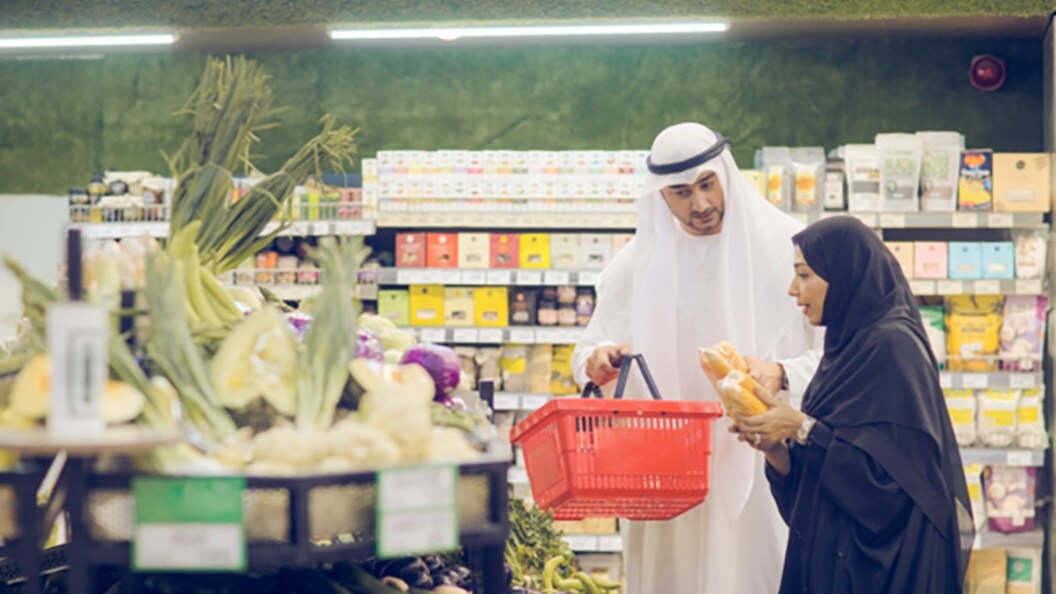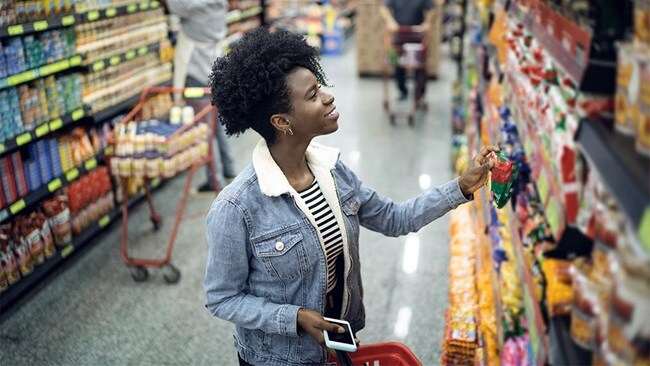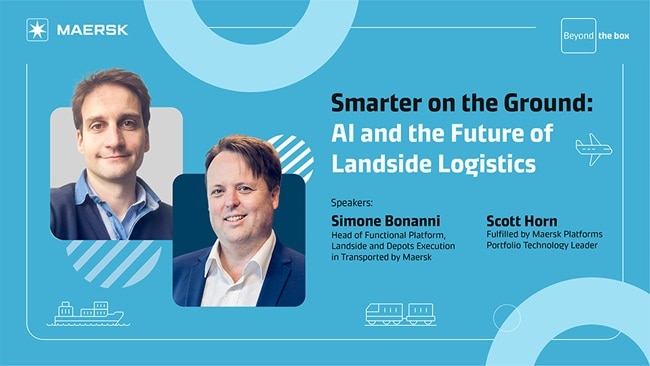The fast-moving consumer goods (FMCG) sector in Saudi Arabia and the UAE offers significant growth opportunities, driven by expanding populations, rising consumer incomes, and strong government support for economic diversification. Both countries are seeing increased demand for innovative products, healthier options, and greater convenience.
Furthermore, investments in logistics and digital infrastructure are enhancing market accessibility. In the Saudi Arabian retail sector, Vision 2030 initiatives and AI-powered demand forecasting are transforming seasonal supply challenges. Meanwhile, UAE logistics, anchored by Jebel Ali Port, Al Maktoum Airport, and blockchain-powered trade corridors, positions the country as a regional distribution hub.
Across both markets, supply chain innovation through AI, blockchain, and IoT is reducing costs, improving efficiency, and ensuring resilience. With progressive trade agreements, progressive regulatory reforms and a focus on local production, the FMCG landscape in these markets is poised for continued expansion, making them attractive destinations for both regional and global brands.
As both markets embrace digitalization and invest in world-class logistics infrastructure, new trends are emerging that are redefining competitiveness and growth across the Gulf. From smarter supply chains to progressive trade policies, understanding these trends is essential for businesses seeking to thrive in the region’s dynamic retail landscape.
Let's explore some of the top FMCG trends in Saudi Arabia and the UAE.
FMCG in Saudi Arabia: Market Outlook & Trends
As Saudi Arabia’s FMCG market accelerates, the kingdom is emerging as a leader in Gulf consumer markets. An exploration of its rapid growth, evolving retail dynamics, logistics innovation, and regulatory developments highlights why.
Rapid market growth
The FMCG sector in Saudi Arabia continues to expand, with forecasts signaling strong and sustained market growth ahead. This acceleration is propelled by a young and increasingly affluent population, rapid urbanization, and a preference for modern FMCG retail experiences.
Government-backed initiatives such as Vision 2030, the Agricultural Development Fund, and the National Livestock and Fisheries Development Program are creating fertile ground for local production. This blend of consumer demand and state-driven reform is reshaping Saudi Arabia’s retail landscape, making it one of the most dynamic FMCG markets in the GCC.
Managing Saudi Arabia's retail dynamics
As Saudi Arabia’s retail dynamics oscillate between seasonal peaks straining supply chains and off-peak overstocking risks, smart forecasting helps balance inventories and optimize efficiency.
- Seasonal peaks pressure supply chains
- Off-peak periods create overstocking risks
- Smart forecasting to balance the extremes
Events like Ramadan, Hajj, and national celebrations drive sharp spikes in consumer demand, putting intense pressure on FMCG supply chains. The result? Challenges such as product shortages, rising logistics expenses, and persistent last-mile delivery bottlenecks remain key pain points for retailers.
Once the seasonal rush subsides, retailers face the opposite challenge: excess inventory sitting idle in warehouses, which leads to higher storage costs and the threat of product expiry. For fast-moving goods with short shelf lives, this is a costly problem.
To tame these demand swings, Saudi Arabia retailers are embracing supply chain forecasting. By analyzing historical sales trends and real-time market data, these tools help optimize inventory, cut waste, and maintain profitability.
Logistics and supply chain innovation
The FMCG trends in Saudi Arabia highlight a transformative shift in logistics, with companies leveraging supply chain innovation to overcome global disruptions like port congestion and geopolitical risks.
Key strategies to enhance agility include:
- Diversifying suppliers
- Adopting smart warehousing
- Expanding multimodal transport networks—road, rail, and air.
Government initiatives like the National Transport and Logistics Strategy (NTLS) further bolster resilience, with smart hubs such as Jeddah Central Logistics Zone optimizing cold chain management for perishable goods.
Regulatory and trade developments
Saudi Arabia’s retail sector is evolving alongside progressive regulatory reforms, including stricter SFDA quality controls that incentivize blockchain traceability and IoT-enabled cold chain monitoring. New GCC trade agreements with China, India, and African markets are lowering tariffs and unlocking broader access to regional FMCG opportunities. At the same time, hubs like King Salman International Logistics Hub encourage supply chain innovation.
Summary of FMCG Trends in Saudi Arabia
FMCG trends Saudi Arabia reveal a rapidly growing and dynamic market, driven by a young population, urbanization, and government-backed reforms like Vision 2030. The sector faces challenges from seasonal demand spikes and off-peak overstocking, but retailers are leveraging smart forecasting to optimize inventory and reduce waste. Logistics innovations—such as supplier diversification, smart warehousing, and multimodal transport—boosts resilience, while progressive regulatory changes and new trade agreements are enhancing supply chain transparency and expanding regional opportunities. These factors together are positioning Saudi Arabia as a leader in the Gulf’s FMCG landscape.
FMCG in the UAE: Market outlook & Trend
While the industry in Saudi Arabia gains momentum under Vision 2030 reforms, the UAE’s logistics-driven market continues to demonstrate strong and competitive expansion within the FMCG sector. The major drivers of FMCG trends in the UAE are digital innovation, world-class logistics infrastructure, and progressive trade policies.
Strong market growth
UAE’s FMCG sector is experiencing robust expansion, fueled by strong consumer demand and investments in supply chain innovation and infrastructure. A wealthy expatriate base, combined with a thriving tourism industry and digitally savvy consumers, underpins this momentum.
Modern retail giants, Carrefour and Lulu Hypermarket, lead the UAE’s thriving physical retail landscape. At the same time, quick-commerce leaders like Talabat and Noon are reshaping household convenience.
Government initiatives are also steering the sector toward self-reliance. The “Make it in the Emirates” program is driving local manufacturing, while the UAE Food Security Strategy 2051 focuses on strengthening UAE's logistics.
Technology as a game-changer
As the UAE’s FMCG market embraces cutting-edge technology, supply chain innovation is proving critical to managing hyper-seasonal demand spikes. Such capabilities define FMCG trends in the UAE, where agility meets operational efficiency.
- Tackling hyper-seasonal demand
Seasonal and large-scale events, including Ramadan, the Dubai Shopping Festival, and Expo 2025, trigger sharp demand surges stretching UAE logistics capacity. Retailers now rely on improved demand forecasting to reduce stockouts and optimize inventory.
- Smarter pricing and simulation
The UAE leads in AI-powered dynamic pricing, helping retailers adapt to real-time FMCG trends. Digital twin simulations further strengthen resilience by modeling disruptions, ensuring preparedness for hyper-seasonal surges.
- Cloud and blockchain integration
Cloud-based inventory platforms sync suppliers and retailers, ensuring accuracy, a key advantage for Saudi and UAE retail markets. At the same time, blockchain streamlines supplier verification, speeding up customs and ensuring compliance
-
AgriTech boom
UAE’s AgriTech boom, fueled by government grants, shortens supply chains through vertical farming. For FMCG players, this translates to cost savings, fresher products, and stronger food security.
UAE logistics: Infrastructure and resilience
UAE logistics set the regional benchmark. For instance, Jebel Ali Port, ranked first in MENA for container traffic, and Al Maktoum Airport, with a massive 12 million-ton cargo capacity, form the backbone of its FMCG distribution network.
To further enhance resilience, the UAE has introduced:
- Dual-sourcing trade corridors linking Asia and Africa via Khalifa Port
- Dubai Trade is leveraging AI-driven digital twin technology to forecast port congestion, enhancing resilience across UAE logistics operations
- Solar-powered cold chain warehouses in Dubai South to handle temperature-sensitive goods
- Blockchain-based Virtual Corridors that have slashed clearance times for pre-approved shipments
Together, these supply chain innovations ensure the UAE maintains its reputation as a logistics powerhouse while improving efficiency.
Progressive regulations and trade advantages
With its progressive and business-friendly regulations, FMCG trends in the UAE are accelerating, positioning the country as a market leader. Forward-thinking initiatives like ESMA's updated standards and AI-driven Halal Certification 4.0 are raising the bar for supply chain innovation and compliance.
Through strategic CEPAs with global partners and unified GCC customs reforms, the UAE is simplifying cross-border FMCG logistics, driving down costs to encourage regional market entry.
Summary of FMCG Trends in the UAE
When looking at the FMCG trends in the UAE, it highlights a rapidly expanding market driven by digital innovation, advanced logistics infrastructure, and progressive trade policies. The sector benefits from strong consumer demand, a diverse expatriate population, and a thriving tourism industry. Technology is at the forefront, with AI-powered forecasting, dynamic pricing, and blockchain integration enhancing supply chain efficiency and resilience. Government initiatives like “Make it in the Emirates” and the UAE Food Security Strategy 2051 are promoting local production and logistics excellence. With modern retail leaders and quick-commerce platforms reshaping consumer convenience, the UAE’s business-friendly regulations and trade agreements continue to position it as a leading FMCG hub in the region.
The future of FMCG trends in Saudi Arabia and the UAE
FMCG trends in the Gulf are being redefined by both Saudi Arabia and the UAE, with combined government reforms, digital innovation, and strategic trade shifts. Saudi Arabia's retail sector is growing stronger, while the UAE's logistics network stands out in the region.
What unites these markets are the common FMCG trends of technology-driven supply chains and progressive policies, which work together to slash costs, elevate efficiency, and build consumer confidence.
Maersk enables businesses to transform FMCG trends into actionable strategies. Learn more about how seamless supply chain solutions can drive success across the Saudi Arabia and UAE FMCG markets.
Discover more useful articles with Maersk Logistics Insights and learn more about other relevant insights on supply chain growth as well as on the FMCG sector. Or for more logistics trends and insights, read and download The Logistics Trend Map.















